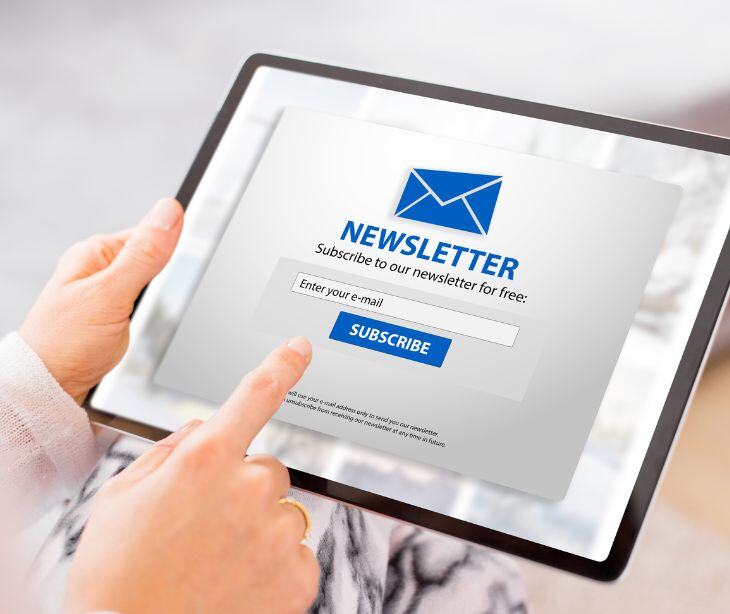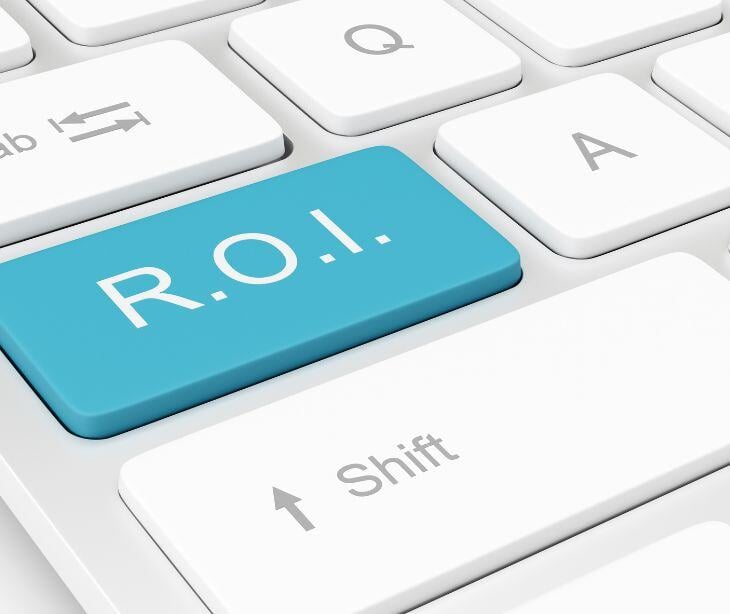
Email marketing is an effective communication channel for healthcare, with high engagement numbers and a strong return on investment. Additionally, sharing news and updates within a newsletter will keep your practice at the forefront of current and prospective patients’ minds. A secure, well-written healthcare email newsletter fosters patient engagement and delivers comprehensive patient care.
Such newsletters are only worthwhile to healthcare organizations that respect HIPAA compliant marketing and security rules. Let’s explore the world of healthcare email marketing and organizational news in a newsletter. We’ll also provide some tips and best practices to help you create meaningful connections with patients through HIPAA compliant email newsletters.
Learn about: HIPAA compliant email marketing: What you need to know
HIPAA compliant healthcare emails
Enacted to safeguard sensitive information, HIPAA defines protected health information (PHI) as individually identifiable data transmitted and maintained by healthcare providers. The HIPAA Privacy Rule outlines general procedures and rules for the use and disclosure of PHI. Like all forms of communication that might contain PHI, an email must be HIPAA compliant.
Healthcare organizations must enact certain security measures to incorporate PHI into marketing emails. Under the HIPAA Security Rule, covered entities must implement security protocols that protect the "confidentiality, integrity, and security of [electronic PHI (ePHI)]." Examples of cybersecurity measures that meet HIPAA standards include encryption, access controls, and proper authorization. In most situations, providers must also obtain a patient's written authorization before including PHI in marketing communication.
There are many positive, transformative features of email communication when done securely and compliantly. In fact, utilizing email marketing to educate and communicate with patients is a great way to improve patient outcomes. Email marketing newsletters offer a direct channel to patients and prospective patients, allowing organizations to educate, inform, and of course, promote themselves.
Related: How does HIPAA define marketing?
Examples of healthcare marketing emails
- General newsletters
- Organizational news
- Health tips and educational advice
- Preventive care reminders
- Patient satisfaction surveys
- Appointment reminders
- Personalized care plans
- Seasonal health alerts
- Telemedicine promotion
- Patient reengagement campaigns
Organizational news in a healthcare email newsletter
Healthcare organizations should send regular “news” in email newsletters with relevant research, updates, announcements, and milestones. Newsletters about a healthcare provider’s practice are effective because they:
- Keep an organization on patients’ minds
- Actively engage patients and remind them to consider their health needs with the specific organization
- Offer an opportunity to share provider news and updates
- Announce a new service or a change to current services for both current and prospective patients
- Allow patients to easily forward information about a practice to friends and family
These newsletters can have a clear call to action to encourage recipients to learn more or take advantage of the news. They don't have to be long, detailed, or jam-packed. Rather, a short, direct newsletter is more readable, letting patients pick up what they need when they need it.
Patient relationships continue outside a waiting room, and a good healthcare email newsletter can do several things at once. It can drive loyalty, spread awareness, and increase business. If done correctly, a newsletter can be where patients get their health-related information. They may even look forward to newsletters from your organization.
Read more: HIPAA compliant email newsletters: tips and best practices
HIPAA compliant newsletter tips and best practices
Email newsletters can be HIPAA compliant, provided they're sent securely and follow HIPAA’s guidelines. Consider the following tips and best practices to maintain compliance when sending organizational news in an email.
- Obtain written consent before sending emails containing PHI. Clearly explain the purpose and scope and provide instructions for opting out of receiving newsletter emails.
- Use a HIPAA compliant email marketing platform like Paubox with strong cybersecurity to prevent unauthorized access. Get that vendor to sign a business associate agreement (BAA) to demonstrate HIPAA compliance.
- Encrypt all emails in storage and in transit to protect them from unauthorized access.
- Moreover, limit access to PHI to authorized personnel only, even among staff. Ensure that the recipients of the emails have a legitimate need to access the information.
- Always share minimal PHI when conveying organizational news. Avoid the unnecessary exposure of sensitive information and ask yourself if the information has a valid purpose.
- Train staff in HIPAA regulations and the proper handling of PHI. On top of this, maintain audit trails to document compliance efforts and actions taken with PHI.
An email newsletter can be a powerful tool that enhances convenience, accessibility, and the patient-provider relationship.
Stay informed to keep patients informed
Generally, everyone is familiar with and uses emails to communicate. Therefore, HIPAA compliant email communication is a convenient and user-friendly way to share organizational news. In fact, HIPAA compliant email has revolutionized patient communication by providing numerous benefits to both providers and patients alike.
Integrating the above tips and best practices and adopting a thought-out approach to sending news through email can create meaningful, secure connections. To do this, stay informed about the latest regulations and best practices in email marketing and continually refine marketing campaigns to deliver the best possible experience for patients.
FAQs
Can patient information be sent via email?
According to the U.S. Department of Health and Human Services (HHS), “the Security Rule does not expressly prohibit the use of email for sending e-PHI.” However, covered entities must implement policies and procedures based on HIPAA standards for access control, integrity, and transmission security of ePHI. These measures must “protect the integrity of, and guard against unauthorized access to e-PHI.”
Why is safeguarding PHI required by HIPAA?
HIPAA's regulations protect personal information against unauthorized access, mitigating potential financial and reputational damages by preventing identity theft. Safeguarding PHI also reduces the risk of discrimination based on health information, promoting fairness in employment, insurance, and social contexts. Ultimately, HIPAA's emphasis on PHI protection is a cornerstone in building a reliable and patient-centric healthcare system.
Do generic practice newsletters need to be protected?
While generic newsletters may not typically contain specific patient information, there's always a possibility that they could inadvertently include PHI, such as discussing certain medical conditions, treatments, or procedures in a way that could identify a patient. Therefore, healthcare organizations must ensure that any newsletters, whether generic or targeted, are handled in compliance with HIPAA regulations to protect patient privacy and confidentiality.
Subscribe to Paubox Weekly
Every Friday we'll bring you the most important news from Paubox. Our aim is to make you smarter, faster.



